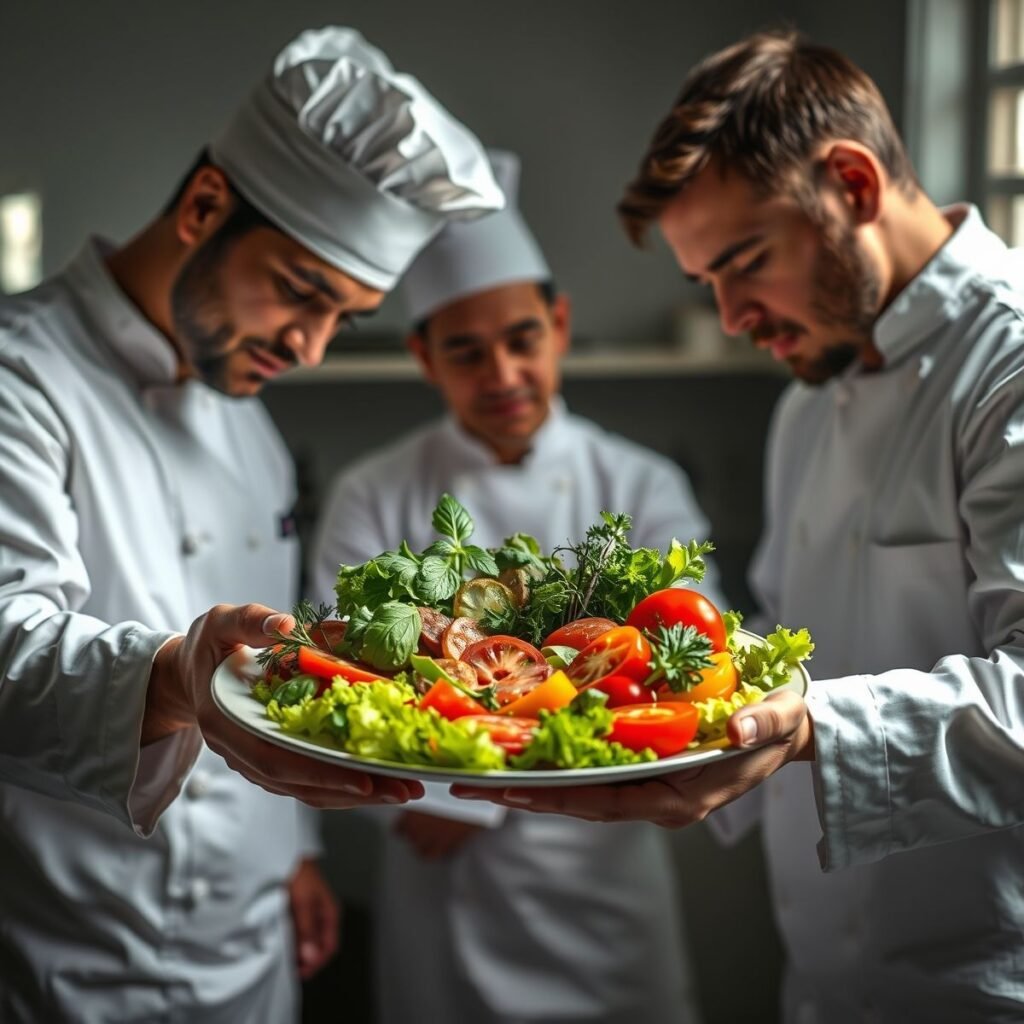Índice do Conteúdo
- Understanding Vegetable-Centric Main Courses
- Kitchen Fatigue Is Real Here’s the Cure
- The Importance of Fresh Produce
- Creative Cooking Techniques
- Incorporating Grains and Legumes
- Flavor Pairings and Seasonings
- Global Inspirations
- Plant-Based Protein Options
- Seasonal and Regional Variations
- Presentation and Plating Techniques
Understanding Vegetable-Centric Main Courses
Vegetable-centric main courses are dishes that prioritize vegetables as the primary ingredient, allowing them to take center stage on the plate. This approach not only celebrates the natural flavors and textures of produce but also promotes healthier eating habits. By focusing on seasonal vegetables, these meals can be both vibrant and satisfying, catering to diverse dietary preferences and encouraging culinary creativity.
The Importance of Fresh Produce
Celebrating produce as the star of the plate means emphasizing freshness and quality. Using locally sourced, seasonal vegetables enhances the taste and nutritional value of dishes. Fresh produce not only offers optimal flavor but also supports local farmers and reduces the carbon footprint associated with transporting food. Incorporating a variety of colors and textures from different vegetables can create visually appealing and nutritionally balanced meals.
Creative Cooking Techniques
When crafting vegetable-centric main courses, employing various cooking techniques can elevate the dish. Techniques such as roasting, grilling, steaming, and sautéing can enhance the natural sweetness and complexity of vegetables. Roasting vegetables caramelizes their sugars, while grilling adds a smoky depth. Experimenting with different methods allows for a range of flavors and presentations, making vegetable-centric meals exciting and enjoyable.
Incorporating Grains and Legumes
To create heartier vegetable-centric main courses, consider incorporating grains and legumes. Ingredients like quinoa, brown rice, lentils, and chickpeas can provide necessary protein and fiber, making the dish more filling. These additions not only complement the vegetables but also introduce additional flavors and textures. A well-balanced meal can be achieved by pairing vegetables with wholesome grains and legumes, satisfying a variety of appetites.
Flavor Pairings and Seasonings
The success of vegetable-centric main courses often lies in the seasoning and flavor pairings used. Fresh herbs, spices, and condiments can elevate the natural taste of vegetables, making them more enticing. For instance, a sprinkle of fresh basil can brighten a tomato-based dish, while a dash of smoked paprika can add depth to roasted root vegetables. Exploring various flavor profiles can lead to delightful culinary discoveries and enhance the overall dining experience.
Global Inspirations
Vegetable-centric main courses can draw inspiration from global cuisines, offering a diverse array of flavors and techniques. For example, Mediterranean dishes often highlight the use of olive oil, garlic, and fresh herbs, while Asian cuisines may focus on stir-fries and bold sauces. By incorporating international flavors, home cooks can create exciting and satisfying meals that celebrate produce in unique ways, appealing to a wide audience.
Plant-Based Protein Options
As the trend toward plant-based diets continues to grow, incorporating plant-based proteins in vegetable-centric main courses is essential. Tofu, tempeh, and seitan are excellent additions that can provide texture and heartiness. These protein sources can be marinated and cooked in various ways to complement the star vegetables, ensuring that the dish is not only nutritious but also appealing to those seeking meat alternatives.
Seasonal and Regional Variations
Emphasizing the seasonality of vegetables allows for unique and regional variations in vegetable-centric main courses. For instance, summer dishes may showcase zucchini, bell peppers, and tomatoes, while fall recipes can highlight squash, Brussels sprouts, and root vegetables. By adapting recipes to reflect the seasons and regional availability, home cooks can create dishes that are both timely and relevant, ensuring the best possible flavor and freshness.
Presentation and Plating Techniques
The way a vegetable-centric main course is presented can enhance the dining experience significantly. Thoughtful plating techniques, such as layering, stacking, or using colorful garnishes, can make the dish visually appealing. A well-presented dish not only draws attention but also encourages enjoyment and appreciation for the ingredients. Taking the time to arrange vegetables artfully on the plate can elevate the meal from simple to extraordinary, making it a true celebration of produce.



